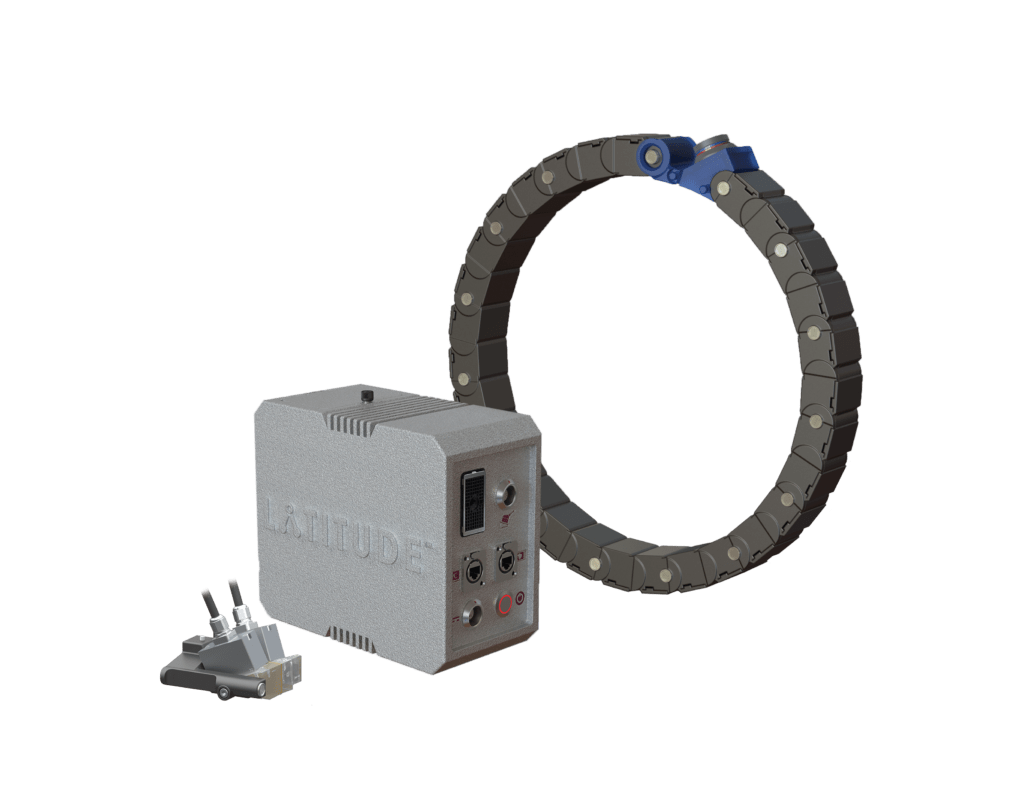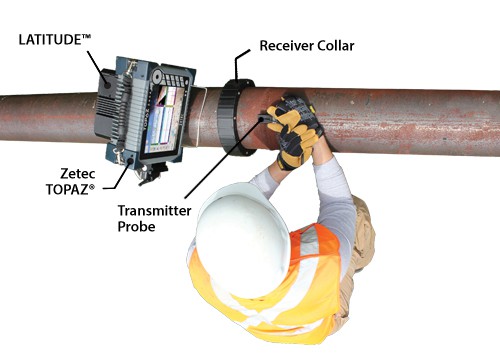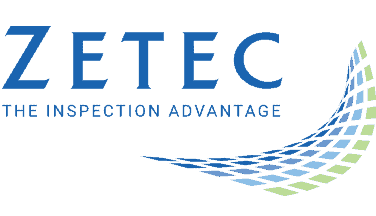OVERVIEW
Manual Scans. Automated Results.
LATITUDE is a revolutionary non-mechanized position and orientation encoding system that enables the digitization and recording of manual nondestructive testing (NDT) inspections. Developed by Structural Integrity Associates, LATITUDE is designed for use with the TOPAZ family of portable phased array ultrasonic testing (PAUT) instruments.
LATITUDE enables an examiner to manually apply and manipulate NDT sensors. This manual manipulation provides tactile feedback on surface condition, contact and coupling that leads to improved signal-to-noise results when compared to mechanized delivery. The manually applied sensor also allows the examiner to more efficiently discern and characterize component damage.

LATITUDE combines the simplicity of a manual inspection with the rigor and quality of an automated inspection, delivering unmatched inspection value. When compared to a fully automated acquisition system, LATITUDE can deliver better quality results and faster setup time with less equipment. The LATITUDE encoding system is compact and portable, consisting of:
- Single battery-powered electronics box: The brain of the system, responsible for collecting the air-born ultrasonic data, translating it into position information, and communicating with the TOPAZ instrument. It consists of a sealed fanless enclosure and is powered by two (2) hot-swappable batteries that provide up to 10 hours of usage. Attaches to the rear of TOPAZ instrument using a quick-release clip.
- Lightweight receiver array collar: For use on flat and curved surfaces. Depending on the application, the collar can be wrapped around the pipe circumference, stretched along the pipe axis, or be otherwise placed on any flat or curving surface. All wiring is self-contained.
- Small transmitter attachment: Contains multiple sensors for determining the axial (x-) position, circumferential (y-) position, and skew (rotation) of the fixture. It is typically affixed to a sensor such as a PAUT probe.
How it works

LATITUDE uses air-born ultrasound to achieve its position tracking capabilities and does so by tracking the position of a small transmitting probe relative to a set, or array, of stationary receiver sensors. The LATITUDE transmitting probe attachment can be added to a variety of probes and the absolute position of the probe can be tracked multi-dimensionally, relative to the receiver array. The electronic control box is integrated with the TOPAZ instrument and control of the LATITUDE system is done through the customized TOPAZ user interface.
Installing and calibrating the LATITUDE system adds minimal set-up time to that required for a traditional manual examination.
LATITUDE has been extensively tested in the laboratory and in a power plant environment and has been demonstrated to be resilient in the presence of acoustic and electromagnetic noise.
To learn more about this revolutionary technology, discover the key applications, view a recorded webinar and more, visit http://si-latitude.com/

